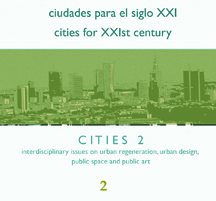MAKING THE NEIGHBOURHOOD A BETTER PLACE TO LIVE. A SWB APPROACH IMPLEMENTING FUNDAMENTAL HUMAN NEEDS
Paraules clau:
Subjective well-being, neighbourhood, urban environments, need satisfaction, Human-Scale Development paradigmResum
Subjective well-being (SWB) studies have been at the centre of researchers’ attention during the last years. With the majority of people now living in cities, the necessity for a more anthropocentric approach for the study and betterment of urban environments is constantly increasing. In this sense, defining and measuring SWB in urban contexts can be of particular benefit in urban design and planning processes. In this article, a method for measuring SWB for urban places based on the accomplishment of the fundamental human needs is presented and applied at a neighbourhood of Barcelona; that of Vila de Gràcia. For the measurement, a survey was constructed based on the specific geographical and socio-economic characteristics of the study case. Retrieved from Max-Neef’s Human Scale Development Paradigm (Max-Neef et al. 1991), human needs correspond to the domains of study of the suggested method. The matching of the survey’s questions to each need is the outcome of two consecutive processes: a first qualitative one, involving the work of an expert group, and a second quantitative one, involving the definition of weights among the questions that affect the same need. Although the final result is positive (although low) for this study case, results for each need show considerable differences in their level of accomplishment. At the same time people seem to truly believe that most of their feelings are affected by their living environment, with stress and calmness leading the list. In summary, the method defines and applies a simple tool to quantify and evaluate current levels of SWB at different urban scales and to determine more holistic urban indexes in order to improve decision making processes, policies and plans. The classification of the questions per need favours the identification of a potential problem at the urban grid and consequently can be used as a process for implementing related measures of improvement. The method can also be seen as a tool to enhance bottom-up approaches and processes of urban analysis with the aim to create more liveable places for the local population.
Descàrregues
Publicades
Com citar
Número
Secció
Llicència
 La llicència us permet: Compartir - copiar i redistribuir el material en qualsevol mitjà o format i Adaptar - remesclar, transformar i construir sobre el material per a qualsevol propòsit, fins i tot comercialment. El llicenciador no pot revocar aquestes llibertats mentre l'usuari compleixi els termes de la llicència. Els drets d'autor estan protegits per ISSN 1139-7365. A la revista w@terfront no hi ha restriccions de drets d'autor i permet als autors conservar els drets de publicació sense restriccions.
La llicència us permet: Compartir - copiar i redistribuir el material en qualsevol mitjà o format i Adaptar - remesclar, transformar i construir sobre el material per a qualsevol propòsit, fins i tot comercialment. El llicenciador no pot revocar aquestes llibertats mentre l'usuari compleixi els termes de la llicència. Els drets d'autor estan protegits per ISSN 1139-7365. A la revista w@terfront no hi ha restriccions de drets d'autor i permet als autors conservar els drets de publicació sense restriccions.Aquesta revista no cobra als autors cap taxa per enviar o processar articles.







